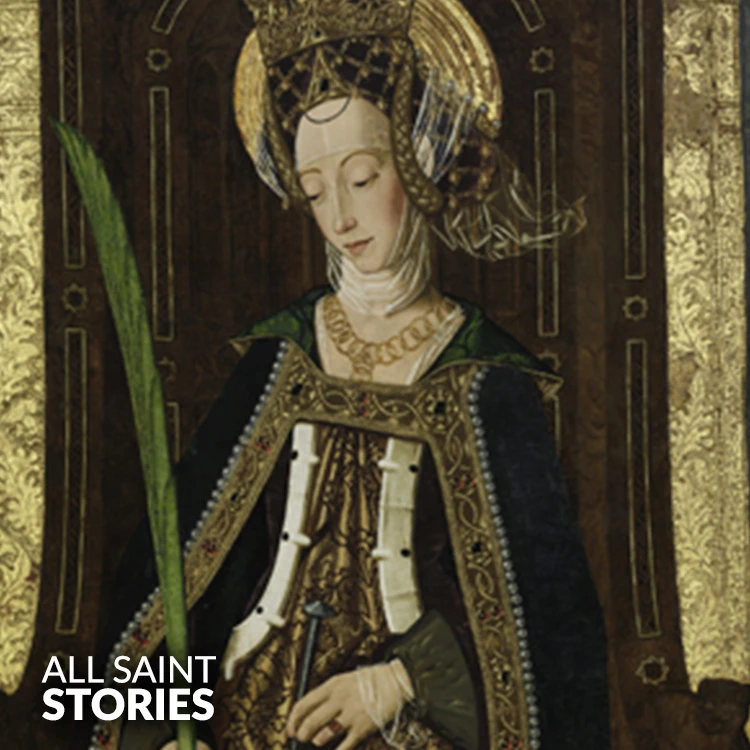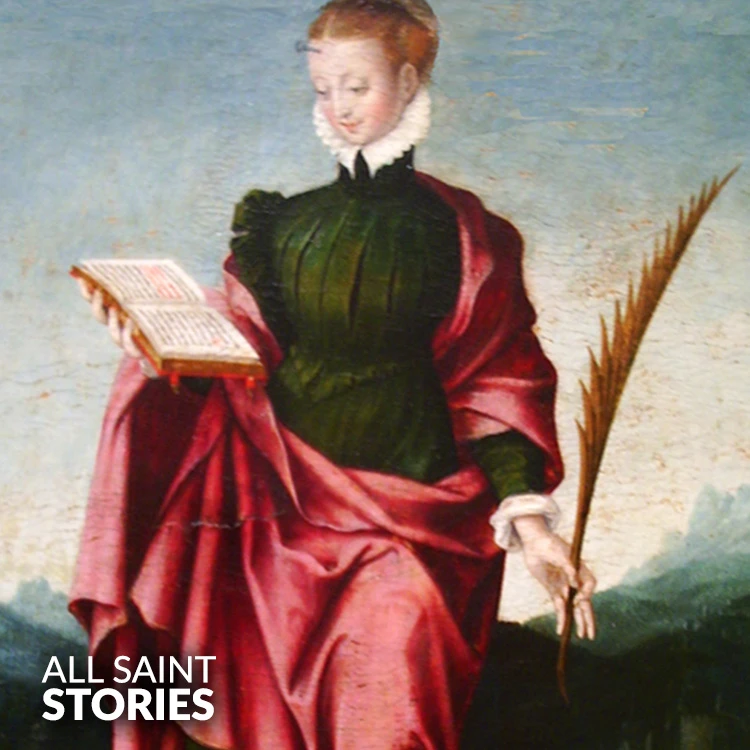O Saint Engratia, steadfast virgin and martyr, through your witness of unwavering faith, intercede for us in times of trial. Inspire in us the courage to remain loyal to our beliefs, and obtain for us the grace to endure suffering with love. Amen.
ST. ENGRATIA
ST. ENGRATIA

Saint Engratia was a young Christian virgin martyred in Zaragoza, Spain, around 303 AD during the Diocletianic Persecution. Known for her courage in confronting Roman authorities, she is venerated for her faith and is honored with a feast on April 16.
Saint Engratia of Zaragoza, also venerated as Santa Engrácia, is a Christian martyr who lived during the Roman Empire’s era of persecution against Christians. Her story is tied to the Diocletianic Persecution, a brutal campaign launched in the early 4th century against Christians who refused to renounce their faith. Engratia was said to be a noblewoman born in Braga, in what is now Portugal. She was engaged to a nobleman from Roussillon and, as part of her marriage arrangements, traveled to Gaul with her uncle Lupercius and a group of companions.
While journeying, they passed through Zaragoza, a city in the Roman province of Hispania Tarraconensis. There, the Roman governor Dacian was actively enforcing the emperor’s orders to persecute Christians. Moved by her Christian convictions, Engratia attempted to reason with the governor and pleaded for mercy for those suffering under his rule. Her courage and compassion were met not with understanding but with cruelty. She was arrested and subjected to severe flogging and torture, ultimately succumbing to her wounds.
Her companions, including Lupercius and eighteen others, were also apprehended and executed—most by beheading. This group would later be remembered collectively as the Martyrs of Zaragoza, and their memory preserved in Christian tradition.
Saint Engratia's memory was kept alive in liturgical celebrations, historical writings, and religious art. Her feast day, April 16, commemorates her martyrdom and devotion. She became a symbol of purity, strength, and unwavering faith in the face of oppression.
Veneration of Saint Engratia spread across the Iberian Peninsula, and in Lisbon, Portugal, the Church of Santa Engrácia was constructed in her honor. Originally started in the 16th century, the church encountered various delays and was only completed in the 20th century, eventually becoming the National Pantheon of Portugal, where many of the nation’s distinguished citizens are interred.
Saint Engratia's image and story have inspired artists over the centuries. One of the notable depictions of her martyrdom is the painting “The Flagellation of Saint Engratia” by Bartolomé Bermejo, painted in the 15th century. This work captures the brutality of her suffering and the serenity of her faith, becoming an iconographic reference for Christian martyrs.
Though little concrete historical documentation survives from her time, the strength of her legacy lies in the traditions and accounts passed through Christian communities. Saint Engratia remains a revered figure in both Roman Catholic and Eastern Orthodox traditions.
Video Not Found
The information on this website is compiled from various trusted sources. While we aim for accuracy, some details may be incomplete or contain discrepancies.
If you notice any errors or have additional information about this saint, please use the form on the left to share your suggestions. Your input helps us improve and maintain reliable content for everyone.
All submissions are reviewed carefully, and your personal details will remain confidential. Thank you for contributing to the accuracy and value of this resource.
Credits & Acknowledgments
- Anudina Visudhar (Malayalam) – Life of Saints for Everyday
by Msgr. Thomas Moothedan, M.A., D.D. - Saint Companions for Each Day
by A. J. M. Mausolfe & J. K. Mausolfe - US Catholic (Faith in Real Life) – Informational articles
- Wikipedia – General reference content and images
- Anastpaul.com – Saint images and reflections
- Pravachaka Sabdam (Malayalam) – Saint-related content and insights
We sincerely thank these authors and platforms for their valuable contributions. If we have unintentionally missed any attribution, please notify us, and we will make the correction promptly.
If you have any suggestion about ST. ENGRATIA
Your suggestion will help improve the information about this saint. Your details will not be disclosed anywhere.
© 2025 Copyright @ www.allsaintstories.com


 English
English
 Italian
Italian
 French
French
 Spanish
Spanish
 Malayalam
Malayalam
 Russian
Russian
 Korean
Korean
 Sinhala
Sinhala
 Japanese
Japanese
 Arabic
Arabic
 Portuguese
Portuguese
 Bantu
Bantu
 Greek
Greek
 German
German
 Dutch
Dutch
 Filipino
Filipino